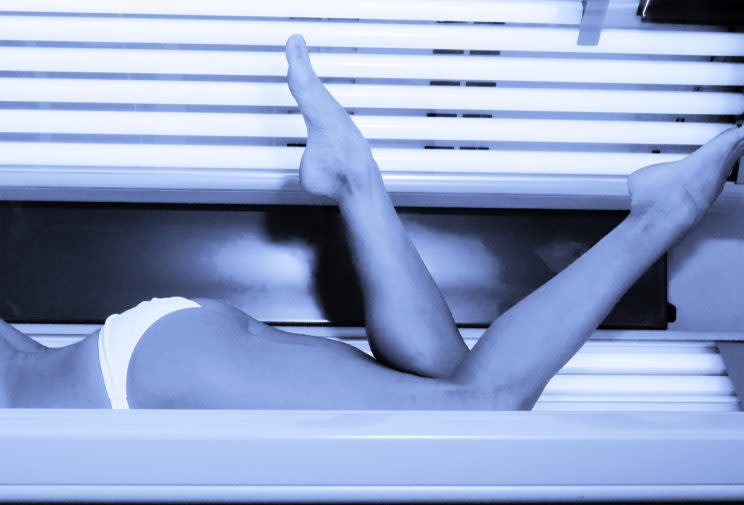Study Finds Banning of Tanning Beds Would Save Lives. Is It Feasible?

A ban on the use of commercial tanning beds in New Zealand would greatly reduce skin cancer rates and have a minimal impact on the country’s economy, according to a new study.
The findings are courtesy of the University of Otago and were published in the New Zealand Medical Journal. For the study, researchers conducted a national audit of businesses that provide tanning bed services and discovered that the ban would only have a small impact on a few businesses. According to the findings, the majority of business with tanning beds were hairdressers, salons, gyms, and fitness centers, and tanning services were just one of many services offered.
Just 13 businesses out of those surveyed relied on tanning as their only source of income, but nine of them also offered spray tanning. Only four businesses in the entire country relied on tanning beds as their lone source of income.
As a result, researchers argue that a ban on tanning beds would greatly lower skin cancer rates while having little impact on the economy.
The link between tanning beds and skin cancer is well documented. According to the Skin Cancer Foundation, people who first use a tanning bed before age 35 increase their risk for melanoma — the deadliest form of skin cancer — by 75 percent. A 2014 study published in JAMA Dermatology found that the number of skin cancer cases due to tanning is higher than the number of lung cancer cases due to smoking and, in the U.S., nearly 420,000 cases of skin cancer can be linked to indoor tanning. Of those cases, more than 6,000 are melanomas. The study also discovered that more than 35 percent of college students had used a tanning bed at some point.
According to the American Cancer Society, skin cancer is the most common form of cancer, with about 5.4 million basal and squamous cell skin cancers diagnosed each year.
Of course, the most recent research focused on New Zealand, not the U.S., but experts say the impact of a tanning bed ban here would also have an impact on skin cancer rates.
Joshua Zeichner, M.D., a New York City-based board-certified dermatologist, tells Yahoo Beauty that he supports the idea of eliminating tanning beds altogether. “Tanning beds are considered by the World Health Organization as a Group 1 carcinogen, put in the same category as plutonium and cigarette smoking,” he says. “They are known to cause skin cancer, some of which are deadly.”
Gary Goldenberg, M.D., medical director of the Dermatology Faculty Practice at the Icahn School of Medicine at Mount Sinai, agrees. “Banning tanning beds is a great idea,” he tells Yahoo Beauty. “Studies show that we are seeing more and more skin cancers in younger patients, especially women, and this is directly related to use of tanning beds.”
Goldenberg notes that banning tanning beds would likely decrease the risk of skin cancer in the U.S., as well as decrease the trend of younger patients developing melanoma and other forms of skin cancer. “Studies link tanning beds to skin cancer and melanoma, especially in younger patients,” he says. “Banning tanning beds would decrease or at least stabilize this alarming trend that we see.”
As for the economic impact … it may be similar to that of New Zealand. Suntan.com says that indoor tanning generates more than $5 billion each year, employs more than 160,000 people, and is one of the fastest growing industries in the U.S. “Around 20,000 tanning salons are in business nationwide and approximately another 15,000 facilities (fitness centers, hair salons, and day spas) offer tanning as a side service,” the site says. However, the site doesn’t give a date on that data.
But there is some indication that the impact would be minimal. In 2010, the Affordable Care Act levied a 10 percent indoor tanning services excise tax that applied to almost all business that operate tanning beds and the impact wasn’t as large as expected. Initial estimates predicted that the tax would bring in $2.7 billion in revenue over the next 10 years, but the Tax Foundation reports that actual revenue from the tax has been much lower. (In 2014, for example, the tax netted the government $92 million, far below the projected $300 million.)
There are several theories for the lower tax revenue, but one is that the increased cost of indoor tanning due to the tax has caused people to tan less. A 2012 study conducted in Illinois and published in JAMA Dermatology found that more than 25 percent of tanning businesses said they had fewer clients due to the tax. The Tax Foundation also notes that 13 percent of businesses that filed the tax in March 2011 didn’t file it in 2012, which indicates that they may have already gone out of business.
Tanning organizations, like the American Suntanning Association, argue that the tan tax has crippled its industry and driven people out of business — which suggests that an all-out ban wouldn’t change much. However, it’s difficult to predict exactly what the economic impact of a ban would be.
Let’s keep in touch! Follow Yahoo Beauty on Facebook, Twitter, Instagram, and Pinterest.

